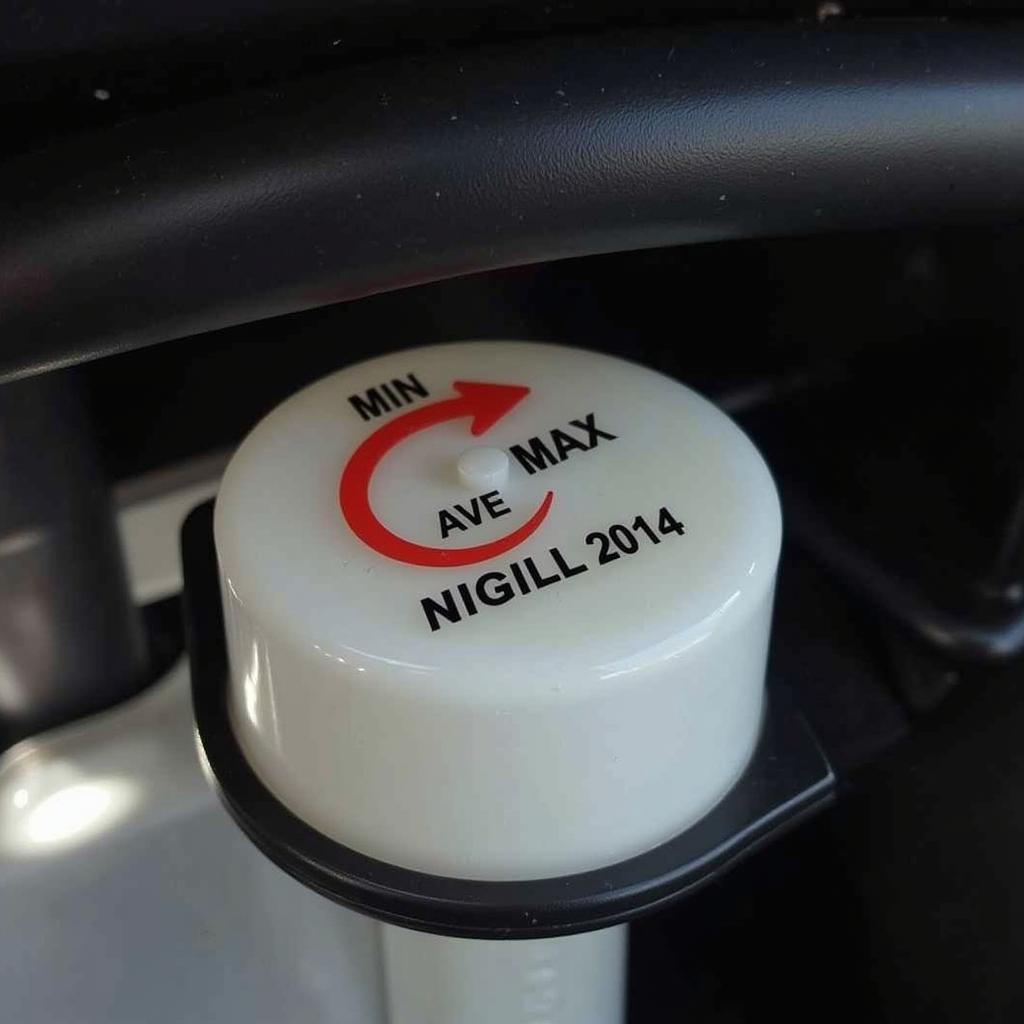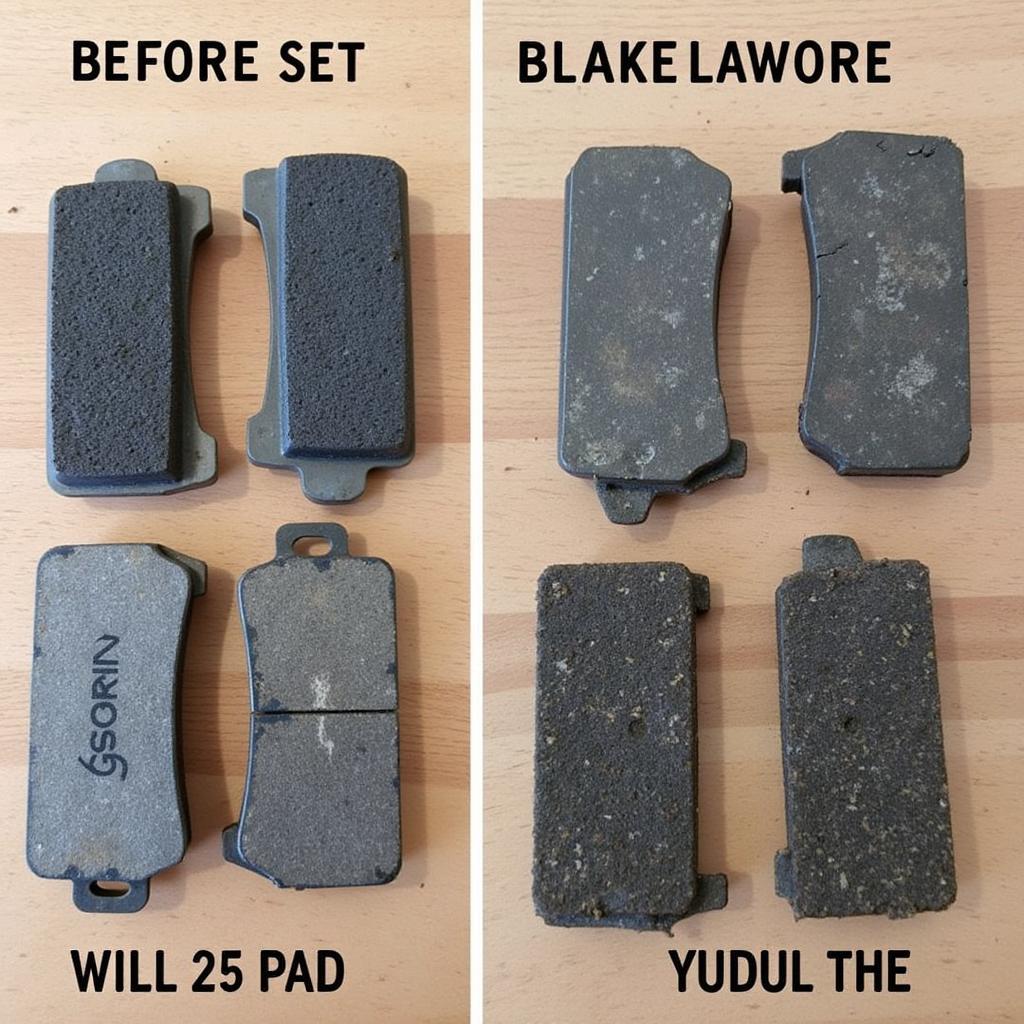Seeing the brake warning light illuminated on your Yukon’s dashboard can be unsettling. It signals an issue with your braking system that needs immediate attention. While some issues require professional help, there are instances where you can reset the brake warning light yourself.
This comprehensive guide will walk you through the common causes of a lit brake warning light on your Yukon and provide step-by-step instructions on how to potentially reset it.
Common Causes of a Lit Brake Warning Light
Before attempting to reset the light, it’s crucial to understand what triggered it in the first place. Here are the most frequent culprits:
- Low brake fluid: This is the most common reason for the brake warning light to activate. Brake fluid is essential for transmitting force when you apply the brakes. A leak or low fluid level can significantly reduce braking efficiency.
- Worn brake pads: Your Yukon’s brake pads have wear indicators that trigger the warning light when they reach a certain level of thinness.
- Faulty brake light switch: This switch activates your brake lights when you press the brake pedal. A malfunctioning switch can disrupt the brake light circuit and trigger the warning light.
- ABS issue: Your Yukon has an Anti-lock Braking System (ABS) designed to prevent wheel lockup during hard braking. If the ABS module detects a problem, it can illuminate the brake warning light.
- Parking brake engaged: It might seem obvious, but sometimes the parking brake is not fully disengaged, causing the light to stay on.
How to Reset the Brake Warning Light on a Yukon
Important: Before attempting any of these steps, ensure the parking brake is fully disengaged.
1. Check Brake Fluid Level:
- Locate the brake fluid reservoir under the hood.
- Check the fluid level, which should be between the “MIN” and “MAX” marks.
 Yukon Brake Fluid Reservoir
Yukon Brake Fluid Reservoir- If the level is low, add the correct brake fluid (DOT 3 or DOT 4, as specified in your owner’s manual) to the “MAX” mark.
- Caution: Brake fluid is corrosive. Clean any spills immediately and avoid contact with your skin or eyes.
2. Inspect Brake Pads:
- If the brake fluid level is fine, the next step is to check your brake pads.
- You’ll need to remove a wheel to inspect the pads visually. If you’re uncomfortable with this, consult a mechanic.
- Look for significant wear on the brake pads.
 Worn Brake Pads on a Yukon
Worn Brake Pads on a Yukon - If the pads are thin or worn down to the metal indicator, they need replacement.
3. Resetting the Light After Addressing the Issue:
- If you added brake fluid or replaced the brake pads: In many cases, simply addressing the underlying issue will be enough to extinguish the brake warning light. Start your Yukon and see if the light turns off.
- If the light persists: If the light stays on even after addressing a low fluid level or worn pads, there might be a more complex issue requiring professional diagnostics.
- Using an OBD-II Scanner: For those comfortable with a bit more technical work, an OBD-II scanner can be used to read and reset certain warning lights, including the brake warning light. However, this should only be done if you’re confident in your ability to interpret and address any error codes the scanner reveals.
When to Consult a Mechanic
While some brake warning light issues can be resolved with simple fixes, certain situations necessitate professional intervention:
- The light remains on after adding brake fluid and checking the brake pads.
- You notice brake fluid leaking.
- Your brake pedal feels spongy or goes all the way to the floor.
- You hear unusual noises when braking, such as grinding or squealing.
Frequently Asked Questions
Can I drive my Yukon with the brake warning light on?
It’s strongly advised against driving with an illuminated brake warning light. It signifies a potential problem with your braking system, putting you and others at risk.
How often should I check my brake fluid?
It’s recommended to check your brake fluid level at least once a month and top it off if needed.
How long do brake pads last?
Brake pad lifespan varies widely depending on driving habits and conditions. On average, they can last anywhere from 30,000 to 70,000 miles.
Is it difficult to replace brake pads myself?
While replacing brake pads is achievable for DIY enthusiasts, it involves several steps and requires some mechanical knowledge. If unsure, seek professional assistance.
Conclusion
A lit brake warning light on your Yukon is a serious matter that should never be ignored. While simple fixes like adding brake fluid or checking the pads might resolve the issue, don’t hesitate to seek professional help if the light persists or if you encounter more complex problems. Remember, a well-maintained braking system is crucial for your safety and the safety of others on the road.

